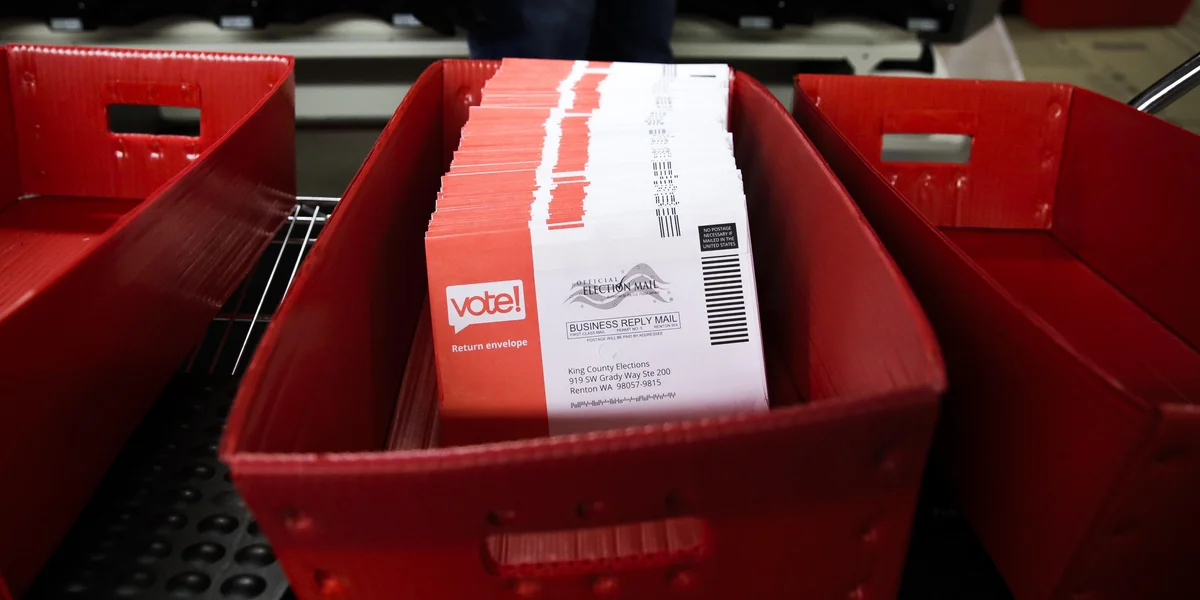If voter turnout equals 2018, mailed-out ballots are on track to comprise over 1/3 of all cast in 2022.
As of this week, we can say, with certainty, that the initial MOBET forecast of 60 million mailed-out ballots has been met and exceeded.
With reported numbers of 59.8 million, plus some states still largely unaccounted for, including Alabama, Missouri, New Hampshire, and Texas – where, if you add their 2018 totals, you approach another million – we can declare that MOBET fulfilled the target of 60 million. That increase of over 40% from 2018 is a testament to the growing popularity of this voting model across the country.
We are now shifting focus to the number of returned mailed-out ballots, recognizing that it will be easier to obtain reports with accurate numbers once states are close to finalizing their certifications in late November. However, we can already see trends developing.
The MOBET tool estimated that we should see 42 million of these ballots cast; to date, nothing in the rate of returns would cause doubt in that number. We can count 18.6 million returned already, acknowledging that many voters wait until closer to Election Day, especially in states that accept the postmark-by date of Election Day as the cut-off rather than the received-by date. At this point, before Election Day – in the Vote at Home states which represent almost 2/3 of mailed-out ballots – one can often nearly triple the mailed-out ballots returned to approximate the final number. While we don’t expect that for all states, 42 million looks like a shoo-in here.
As a reminder: the overall return rate of mailed-out ballots in 2018 was about 71.5%. That’s considerably higher than the overall registered voter turnout rate of approximately 56.7% and even more, separated from the “polling place” voter rate of 53.2% (polling place votes cast divided by registered voters minus those who requested mailed-out ballots).
With over 60 million ballots mailed out – perhaps closer to 61 million – it will only take a turnout rate of about 69% of those, well below the 71.5% in 2018, to exceed the 42 million estimate.
While the final numbers remain to be known, it is also clear that the gap between mailed-out ballot voter turnout and polling place voter turnout will, once again, be significant.
The MOBET tool presents mailed-out ballot totals – and eventual return rates – in four categories:
• 9 “Vote at Home” (VAH) jurisdictions: Every active registered voter receives a ballot in the mail automatically for every election
• 6 “No Excuse – Single Sign-Up” (NE/SSU) states: Any voter, through a single application, can sign up to automatically receive ballots for all future elections
• 21 “No Excuse” (NE) states: All voters are eligible to receive a ballot but must request them for each specific election or every year
• 15 “Excuse Required” (ER) states: Most voters are ineligible to apply for a mailed-out ballot unless they meet a specific legally acceptable excuse
*VAH = CA, CO, DC, HI, NV, OR, UT, VT, WA
*No Ex-SSU = AZ, IL, MD, MT, NJ, VA
*No Ex = AK, FL, GA, ID, IA, KS, ME, MA, MI, MN, NE, NM, NC, ND, OH, OK, PA, RI, SD, WI, WY
*Ex Req.= AL, AR, CT, DE, IN, KY, LA, MS, MO, NH, NY, SC, TN, TX, WV
Based on the numbers we can see, in 2022, we now expect:
• Excuse required states to see 4% utilization, at best (mailed-out ballots divided by registered voters)
• No excuse states to see more than 4x that rate at about 17% utilization
• No excuse states that include SSU to see more than 5x the excuse required rate, at about 21% utilization
Before we depart the issue of the mailed-out ballot totals, it is worth noting a contrast from the October 28, 2022, update. As a reminder, the positive moves – besides the newly crowned Vote at Home states since 2018 (CA, DC, HI, NV, VT) – were in states such as Pennsylvania (up 1.2 million), Massachusetts (up 1 million), and Michigan (up 800,000), with significant upticks in Wisconsin (up 500,000), Maryland (up 450,000), New Jersey (up 400,000) and Illinois (up 400,000).
We can now see a slight but noticeable counter-vailing trend in a few states that chose to minimize the use of mailed-out ballots by making access to them, or their use, more complex. Or they are states where the claimed insecurity of mailed-out ballots has deemed them unsafe in the eyes of some voters. With the caveat that more data will come in over the next week, it appears, through official state elections office reporting or anecdotal media reports, that some states may still need to hit their 2018 levels for mailed-out ballot requests.
Those states include (as of 11/4): Indiana, Iowa, Mississippi, South Carolina, South Dakota, Texas, and Wyoming, with West Virginia and Georgia appearing to come in about dead even with 2018.
Vote at Home’s MOBET information tool relies on official data originating from state and local election officials, some of it compiled by trusted sources including the U.S. Elections Project and Catalist. See the original press announcement here: https://voteathome.org/national-vote-at-home-institute-launches-new-mailed-out-ballot-tracking-forecasting-tool/

